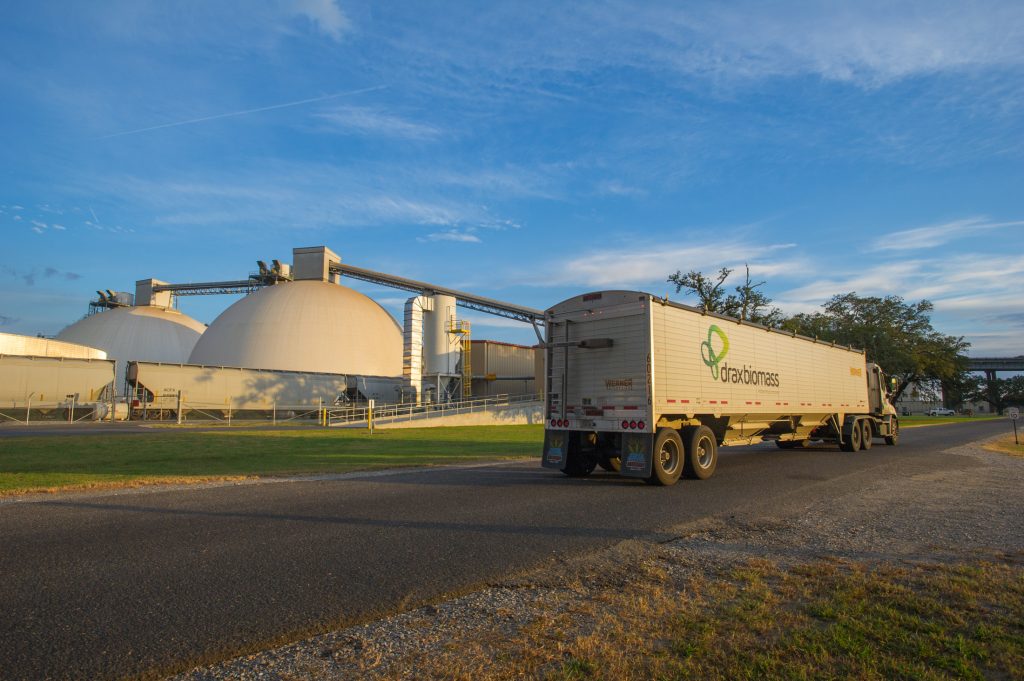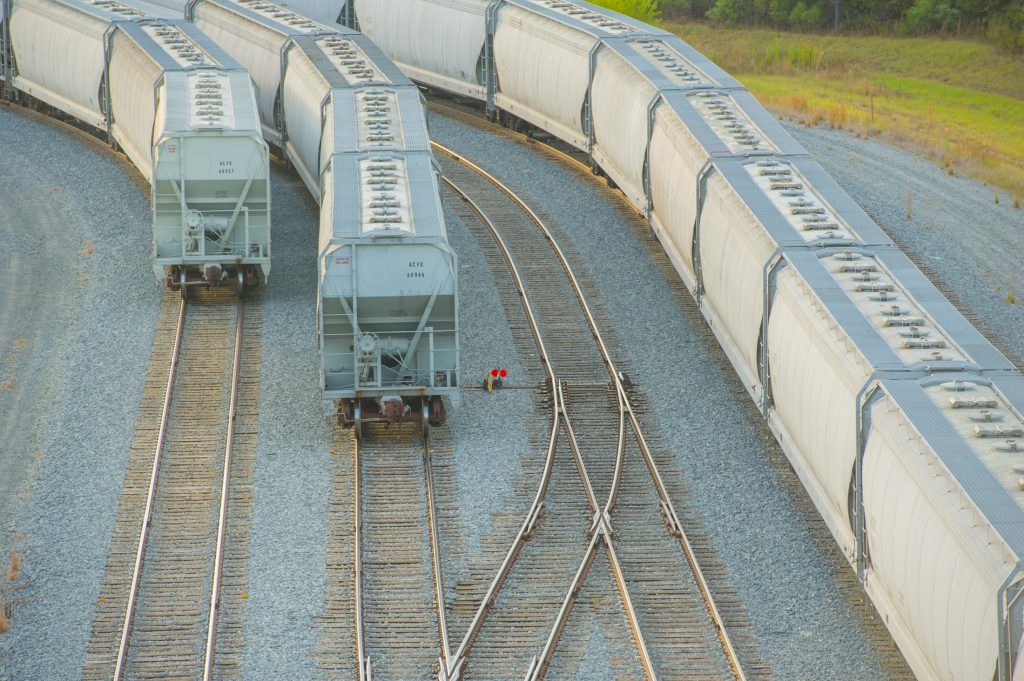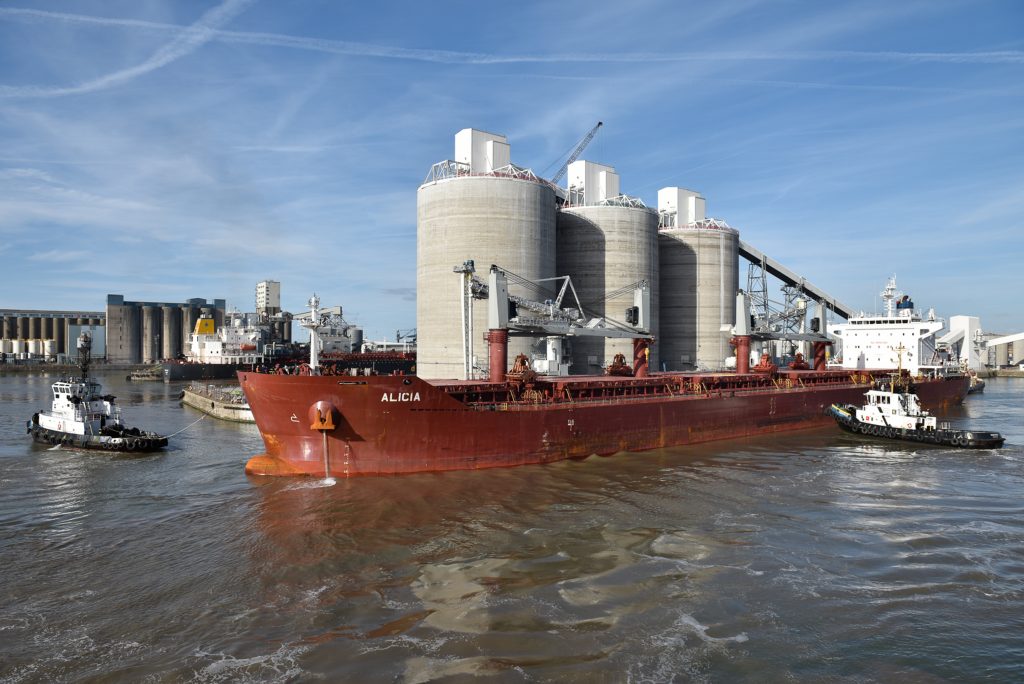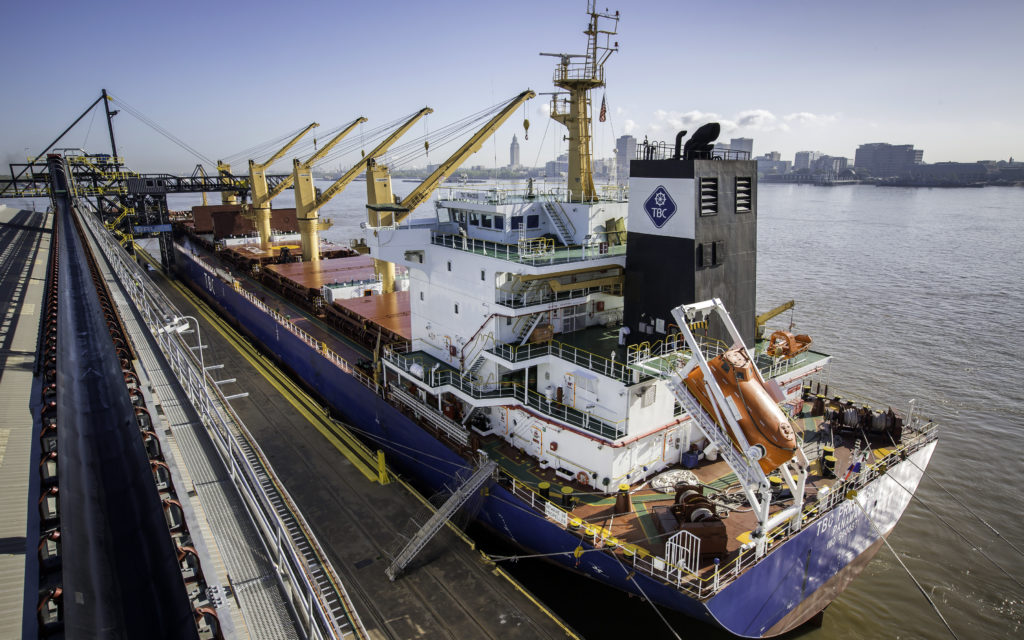This story was updated in August 2018 to reflect recent developments within Drax Biomass.
Consider the wood pellet. Drax Power Station in Yorkshire, England uses millions of tons every year to generate electricity. A significant proportion of those pellets are produced right here in the US at three facilities – one in Bastrop, Louisiana; one in Urania, Louisiana, and one in Gloster, Mississippi.
But before they can be used to generate electricity, they must be transported safely and efficiently across the Atlantic. And before that can happen, the pellets must first reach Drax Biomass’ port facility near Baton Rouge, Louisiana.
That initial journey requires both trucks and trains.

The road trip
The Amite BioEnergy pellet plant in Gloster, MS, lies roughly 60 miles from Baton Rouge. Because there is no rail infrastructure within four miles of the plant, it was decided that trucks were the best option for moving the pellets from plant to port.
“Each truck can carry 26.7 tons of pellets per load, and the journey takes around 90 minutes – accounting for the trucks slowing down when they pass through urban areas. It means that one driver can do three trips on any given day,” says Lloyd Wedblad, Director of Logistics at Drax Biomass.
LaSalle Bioenergy in Urania, LA, presented a different challenge as the end strategy is to move all production via rail. Since that plant didn’t have rail available, the temporary solution was to move the volume via road, with the help from local carriers and dedicated providers. Each truck can carry slightly more than Amite, 29.8 tons of pellets per load by using a Harvest permit.
LaSalle is currently building a rail connection and expects to move the first set of railcars to the port by the end of 2018.
Morehouse Bioenergy in Bastrop, LA, presented a slightly more challenging scenario, as the team needed to find a quick and economical way to transport pellets 221 miles to the port.

Riding the railway
A solution was found in the region’s robust rail infrastructure, which includes the short line Arkansas Louisiana Mississippi (ALM) railroad. Opened in 1908, the ALM line runs from the City of Monroe, Louisiana, to Bastrop, just south of the Arkansas state line.
The trains leaving Morehouse BioEnergy use closed-top grain cars rather than open-top coal cars to protect pellets from the elements. Unlike coal, if wood pellets get wet, they quickly deteriorate and cannot be used as fuel at the power plant.
“The cars are designed to carry 143 tons each. But because of local weight limits on bridges and sections of track along the route, we’re limited to 131.5 tons per car. One railcar equates to just under 4 truckloads of pellets,” says Wedblad.
Once the train arrives at the port, it takes around 24 hours to unload before making the return journey to Bastrop.
Morehouse BioEnergy is currently served by 45 car trains, but this will soon change – in a big way. A new railyard planned for the port will allow the team to begin shipping pellets on 80-car ‘unit trains’ – each nearly a mile long and capable of carrying almost double the volume of current trains. Unit trains will deliver major fuel and cost savings to Morehouse, as well as LaSalle BioEnergy and improve Drax Biomass’ overall supply chain efficiency.

Preparing for the overseas journey
The final stage of the pellets’ journey begins along the Mississippi River at the Port of Greater Baton Rouge. As the pellet-laden trucks arrive from Amite, they drive into a customized bay where they unload their cargo onto a conveyor belt in roughly six minutes before returning to the Gloster facility.
But the trains prove to be a more elaborate challenge – one that will get trickier still as the business transitions to 80-car unit trains. When a train arrives at the port, it is divided into several shorter car-lengths (‘cuts’) before each is routed into an unloading facility.
The cars deposit their cargo onto a separate conveyer belt, which – like the belt under the truck bays – moves the pellets into one of the port’s two 44,100ton storage domes.
Once the domes contain enough volume, a cargo vessel arrives for the transatlantic journey to the UK. Yet another conveyor belt moves the pellets from the domes to the dockside shiploader, which loads each cargo hold until the vessel is ready to sail.

A sustainable supply chain
Not only is this journey from plant to port one that is growing more and more efficient, it’s a sustainable one, too. The emissions associated with each stage of the journey is tracked to ensure the Drax Group supply chain is as low-carbon as possible.
Even with all supply chain emissions considered, the power generated all the way in Drax Power Station in the UK has a carbon emissions profile that is 80% lower than coal. Of all the journeys involved in powering the UK’s biggest single site electricity generator, perhaps the most impressive is how this transition from coal to renewable compressed wood pellets has been made.









